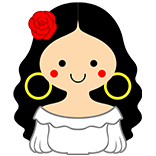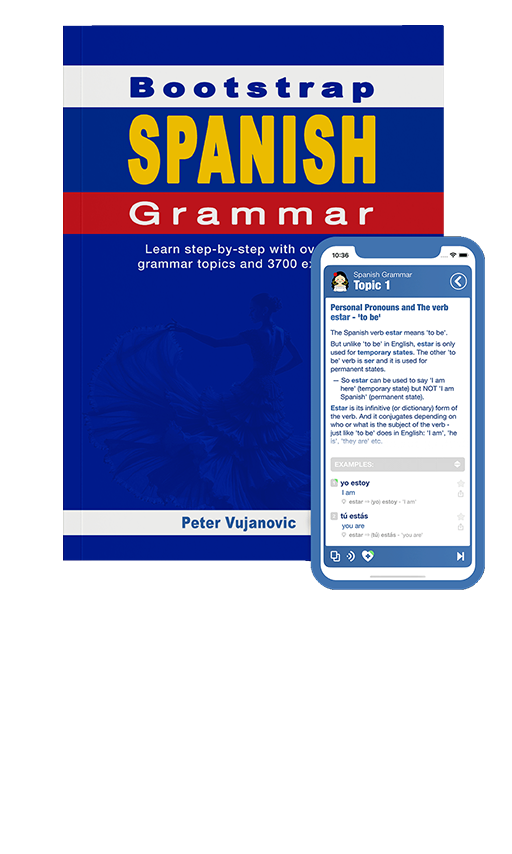Spanish grammar - Personal Pronouns and The verb estar - 'to be' |
|||
|
|||
The Spanish verb estar means 'to be'. But unlike 'to be' in English, estar is only used for 'temporary states'. The other 'to be' verb is ser and it is used for permanent states. -- So estar can be used to say 'I am here' (temporary state) but NOT 'I am Spanish' (permanent state). Estar is its infinitive (or dictionary) form of the verb. And it conjugates depending on who or what is the subject of the verb - just like 'to be' does in English: 'I am', 'he is', 'they are' etc. Below are the present tense conjugations of estar with the singular subject pronouns: • yo estoy - 'I am' • tú estás - 'you are' • él está - 'he is' • ella está - 'she is' So we say that estoy is the yo conjugation of the verb estar. Likewise, estás is the tú conjugation, and está is the él or ella conjugation. The examples below illustrate how the conjugations of the verb estar are used. And new vocabulary is also introduced. |
| Examples: | |
|
yo estoy
I am
|
|
|
tú estás
you are
|
|
|
él está
he is
|
|
|
ella está
she is
|
|
|
Yo estoy feliz.
I am happy.
|
|
|
Él está feliz.
He is happy. |
|
|
Ella está feliz.
She is happy. |
|
|
María está triste.
Maria is sad.
|
|
|
José está de acuerdo.
Jose agrees.
|
|
|
Él está a tiempo.
He is on time.
|
|
|
Ella está tarde.
She is late.
|
|
|
Tú estás temprano.
You are early.
|
|
|
Ella está de acuerdo.
She agrees. |
|
|
María está lejos.
Maria is far away.
|
|
|
José está cerca.
Jose is close by.
|
|
 |
|




